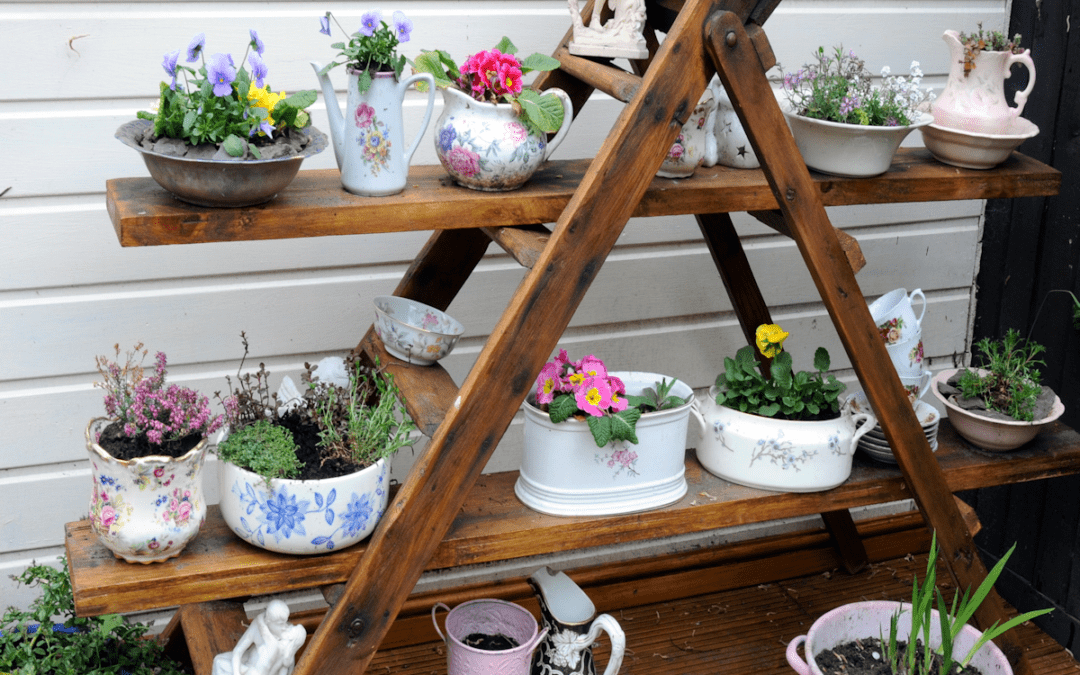Learn About Container Gardening
Pots, tubs, and half barrels overflowing with flowers add appeal to any garden, but container gardening can serve a practical purpose too. Container gardening is ideal for those with little or no garden space. In addition to growing flowers, gardeners limited to a balcony, small yard, or only a patch of sun on their driveway can produce a wide variety of vegetable crops in containers. Basil, chives, thyme, and other herbs also are quite happy growing in pots, which can be set in a convenient spot right outside the kitchen door.
Container gardening also adds versatility to gardens large and small. Plants lend instant color, provide a focal point in the garden, or tie in the architecture of the house to the garden. Place them on the ground or on a pedestal, mount them on a windowsill, or hang them from your porch. A pair of matching containers on either side of the front walk serves as a welcoming decoration, while container gardening on a deck or patio can add color and ambiance to such outdoor sitting areas.
You can use single, large containers for outdoor decoration, but also consider arranging groups of pots, both small and large, on stairways, terraces, or anywhere in the garden. Clusters of pots can contain a collection of favorite plants — hen-and-chicks or herbs used both for ornament and for cooking, for example — or they may feature annuals, dwarf evergreens, perennials, or any other plants you’d like to try. Houseplants summering outdoors in the shade also make a handsome addition to container gardening. Window boxes and hanging baskets offer even more ways to add instant color and appeal.
Containers planted with a single species — rosemary or a bold variegated ornamental grass, for example — can be stunning garden accents. Containers planted with a mix of plants are fun to create and offer almost unlimited possibilities of combinations. The best combinations depend on plants that feature handsome foliage and flowers produced over a long bloom season.
One easy guideline for choosing the plants to combine in a container is to include “a thriller, a spiller, and a filler.” That translates to at least one focal-point plant (the thriller), such as coleus or a geranium with multicolored leaves, for example, combined with several plants that spill over the edge of the pots — such as petunias, bacopa, creeping zinnias, or ornamental sweet potatoes. Finally, add the fillers, which are plants with smaller leaves and flowers that add color and fill in the arrangement all season long. Good fillers include salvias, verbenas, ornamental peppers, and wax begonias, as well as foliage plants like parsley or licorice plants. You may also want to include a plant for height, such as purple fountain grass. Add a trellis or pillar to a container and you can use a vine to add height to the composition. You’ll need a total of five or six plants for an 18- or 24-inch container, for example.
Container Drainage
Whatever container you choose, drainage holes are essential. Without drainage, soil will become waterlogged and plants may die. The holes need not be large, but there must be enough that excess water can drain out. If a container has no holes, try drilling some yourself. A container without holes is best used as a cachepot, or cover, to hide a plain pot. Cachepots (with holes and without them) are useful for managing large plants and heavy pots: Grow your plant in an ordinary nursery pot that fits inside a decorative cachepot so you can move them separately.
Self-watering, double-walled containers, hanging baskets, and window boxes are available. These are a useful option for dealing with smaller plants that need frequent watering.

